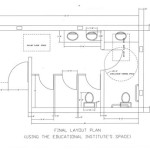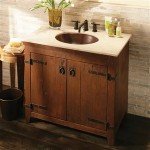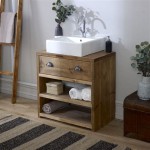Why Do I Smell Sewer Gases In My Bathroom?
The unpleasant odor of sewer gas permeating a bathroom is more than just an annoyance; it can indicate underlying plumbing issues with potential health consequences. Sewer gas is a complex mixture of gases, including hydrogen sulfide, ammonia, methane, carbon dioxide, and nitrogen, produced by the decomposition of organic waste. While low concentrations are generally not acutely harmful, prolonged exposure or high concentrations can lead to various health problems. Understanding the causes of sewer gas smells in a bathroom is crucial for proper diagnosis and remediation to ensure a safe and healthy living environment.
The presence of sewer gas in a bathroom signifies a breach in the plumbing system's ability to contain these gases and prevent them from entering the living space. This containment relies on a network of traps, vents, and sealed connections designed to maintain proper pressure and flow within the drainage system. When these components malfunction or are compromised, sewer gas can escape into the bathroom. Identifying the specific problem requires a systematic approach to assess potential sources and their contributing factors.
Dried-Out P-Traps: The Most Common Culprit
One of the most frequent causes of sewer gas odors in a bathroom is a dried-out P-trap. A P-trap is a U-shaped pipe located under sinks, tubs, and showers. Its primary function is to hold a small amount of water, creating a seal that prevents sewer gases from rising up the drainpipe and into the bathroom. When a fixture is not used regularly, the water in the P-trap can evaporate over time, breaking the seal and allowing sewer gas to enter the room.
This issue is particularly prevalent in guest bathrooms or infrequently used fixtures. Extended periods of vacancy or infrequent use allow the water in the P-trap to gradually evaporate, leaving a direct pathway for sewer gases to escape. The rate of evaporation depends on several factors, including humidity levels, temperature, and the design of the P-trap itself. In dry climates or during periods of low humidity, the water in a P-trap can evaporate relatively quickly, sometimes within a matter of weeks.
Diagnosing a dried-out P-trap is relatively straightforward. If the sewer gas smell is most noticeable near a particular drain, and that drain is not frequently used, a dried-out P-trap is a likely suspect. A simple solution is to run water down the drain for a few minutes to refill the P-trap. If the smell disappears after refilling the trap, the problem is likely resolved. To prevent recurrence, regularly running water down infrequently used drains is recommended to maintain the water seal.
In some cases, even with regular use, a P-trap can dry out due to a slow leak. A tiny crack or a loose connection in the trap can allow water to gradually seep out, eventually lowering the water level below the point where it effectively blocks sewer gases. Inspecting the P-trap for signs of leakage, such as water stains or dampness around the connections, is crucial to identify this type of issue. If a leak is detected, the P-trap will need to be repaired or replaced to restore its functionality.
Furthermore, the design of the P-trap itself can influence its susceptibility to drying out. Some P-traps are shallower than others, meaning they hold less water and are therefore more prone to evaporation. Consider replacing a shallow P-trap with a deeper one to increase its water capacity and reduce the likelihood of it drying out. Additionally, certain types of drain cleaners can damage the P-trap's seals and contribute to leaks, so their use should be minimized.
Ventilation Issues: Disruption of Air Pressure
The plumbing vent system plays a crucial role in maintaining proper air pressure within the drainage system and preventing sewer gases from entering the building. A plumbing vent is a pipe that extends from the drainage system to the outside of the building, typically through the roof. Its purpose is to allow air to enter the drainage system, preventing a vacuum from forming as water flows through the pipes. Without proper venting, the negative pressure created by draining water can siphon water out of P-traps, breaking the seal and allowing sewer gas to escape.
Blockages in the vent system are a common cause of ventilation problems. Debris such as leaves, bird nests, or even dead animals can accumulate in the vent pipe, restricting airflow and disrupting the pressure balance within the drainage system. When this happens, the negative pressure can pull water out of P-traps, leading to sewer gas infiltration into the bathroom. Identifying a blocked vent often requires a visual inspection of the vent pipe on the roof.
If a blockage is suspected, clearing the vent pipe is necessary. This can sometimes be accomplished using a garden hose with a high-pressure nozzle or a plumbing snake. However, caution must be exercised when working on the roof, and it is often advisable to hire a professional plumber to clear the blockage safely and effectively. Additionally, ensuring that the vent pipe is properly screened can help prevent future blockages from occurring.
Another issue that can affect the vent system is improper installation or damage to the vent pipes. If the vent pipes are not properly connected or if they have been damaged by weather or physical impact, leaks can occur, allowing sewer gases to escape into the building. These leaks may not be immediately obvious but can contribute to persistent sewer gas odors. Inspecting the vent pipes for cracks, loose connections, or other signs of damage is essential for identifying and addressing these problems.
In some cases, the vent system may be inadequately sized to handle the drainage demands of the plumbing system. If the vent pipes are too small, they may not provide sufficient airflow to prevent the formation of negative pressure, particularly during periods of heavy water usage. Upgrading the vent system to a larger size can improve ventilation and alleviate sewer gas odors. This type of modification should be performed by a qualified plumber to ensure that it meets local plumbing codes and regulations.
Furthermore, a phenomenon known as "wind-induced downdraft" can also affect the vent system. In certain weather conditions, wind can blow down the vent pipe, creating a positive pressure within the drainage system and forcing sewer gases back into the building. Installing a vent cap or a wind-resistant vent terminal can help prevent this issue and maintain proper ventilation.
Cracked or Leaking Drainpipes: A Serious Problem
Cracked or leaking drainpipes represent a more serious and potentially hazardous source of sewer gas odors in a bathroom. When drainpipes are damaged, sewer gases can escape directly into the surrounding environment, posing a health risk and creating an unpleasant living space. Identifying and repairing these leaks is crucial to ensure the safety and integrity of the plumbing system.
Drainpipes can crack or leak due to a variety of factors, including age, corrosion, physical damage, and improper installation. Over time, the materials used to construct drainpipes can degrade, leading to cracks and leaks. Corrosion can also weaken the pipes, particularly in areas with high levels of moisture or acidic soil. Physical damage, such as from accidental impacts or shifting foundations, can also cause drainpipes to crack or break.
Identifying cracked or leaking drainpipes can be challenging, as they may be located behind walls or under floors. However, several signs can indicate the presence of a leak. These include persistent sewer gas odors, water stains on walls or ceilings, dampness or mold growth in the bathroom, and unexplained increases in water bills. If any of these signs are present, a thorough inspection of the drainpipes is warranted.
A visual inspection of exposed drainpipes can reveal obvious cracks or leaks. However, for pipes that are hidden behind walls or under floors, more advanced techniques may be necessary. Plumbers often use specialized equipment such as video cameras or smoke testing to locate hidden leaks. Video cameras can be inserted into the drainpipes to visually inspect their interior, while smoke testing involves injecting smoke into the drainage system and observing where it escapes, indicating the location of a leak.
Repairing cracked or leaking drainpipes typically involves replacing the damaged sections of pipe. Depending on the extent of the damage and the location of the leak, this may require significant plumbing work. In some cases, it may be necessary to open walls or floors to access the damaged pipes. For example, a leaking pipe behind a tiled shower wall will require removing tiles, replacing the damaged pipe, and then re-tiling. It’s important to hire a qualified plumber with experience in drainpipe repair to ensure that the work is done correctly and in accordance with local plumbing codes.
In cases of extensive damage or corrosion, it may be necessary to replace the entire drainpipe system. This is a more costly and time-consuming undertaking but can be the most effective way to address widespread problems. When replacing drainpipes, it is important to use high-quality materials that are resistant to corrosion and physical damage. Proper installation is also crucial to ensure the long-term integrity of the plumbing system.
Preventative measures can help to avoid cracked or leaking drainpipes. Regular maintenance, such as inspecting the pipes for signs of damage and addressing minor issues promptly, can help prevent more serious problems from developing. Avoiding the use of harsh drain cleaners, which can corrode the pipes, is also recommended. Additionally, protecting the pipes from physical damage, such as by ensuring that they are properly supported and protected from impacts, can help extend their lifespan.

Why Is There A Sewer Odor In My Bathroom Ben Franklin Bay Area

Sewer Smell In Bathroom Solved Bob Vila

Why Does My Toilet Smell Like Sewage 5 Causes Solutions

Sewer Smell In Bathroom Identify And Eliminate The Odor

All About Sewer Gas Exposure Causes Symptoms Treatment More
Why Is There A Sewer Smell Coming From My Toilet Quora
What To Do When You Notice A Sewer Smell In Bathroom Spaces Howstuffworks

Five Reasons Your Bathroom Smells Like A Sewer The Plumbette

Smells Like Sewage Here S Why Simpson Plumbing Llc

Finding And Curing Plumbing Odors Fine Homebuilding
Related Posts







